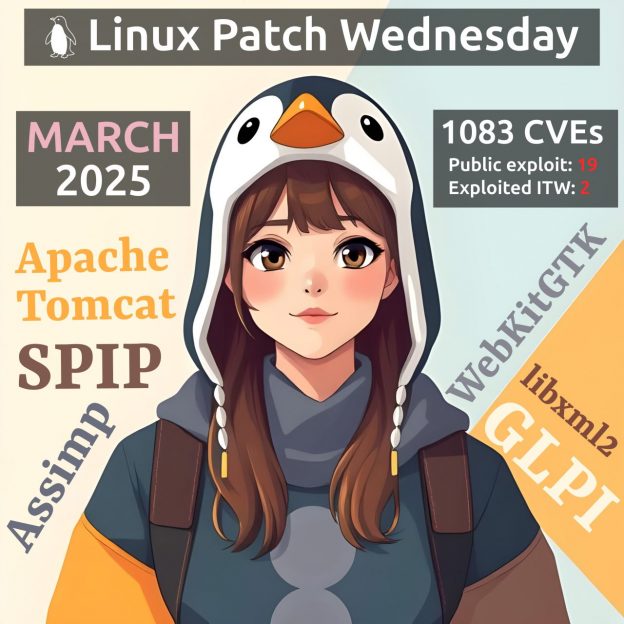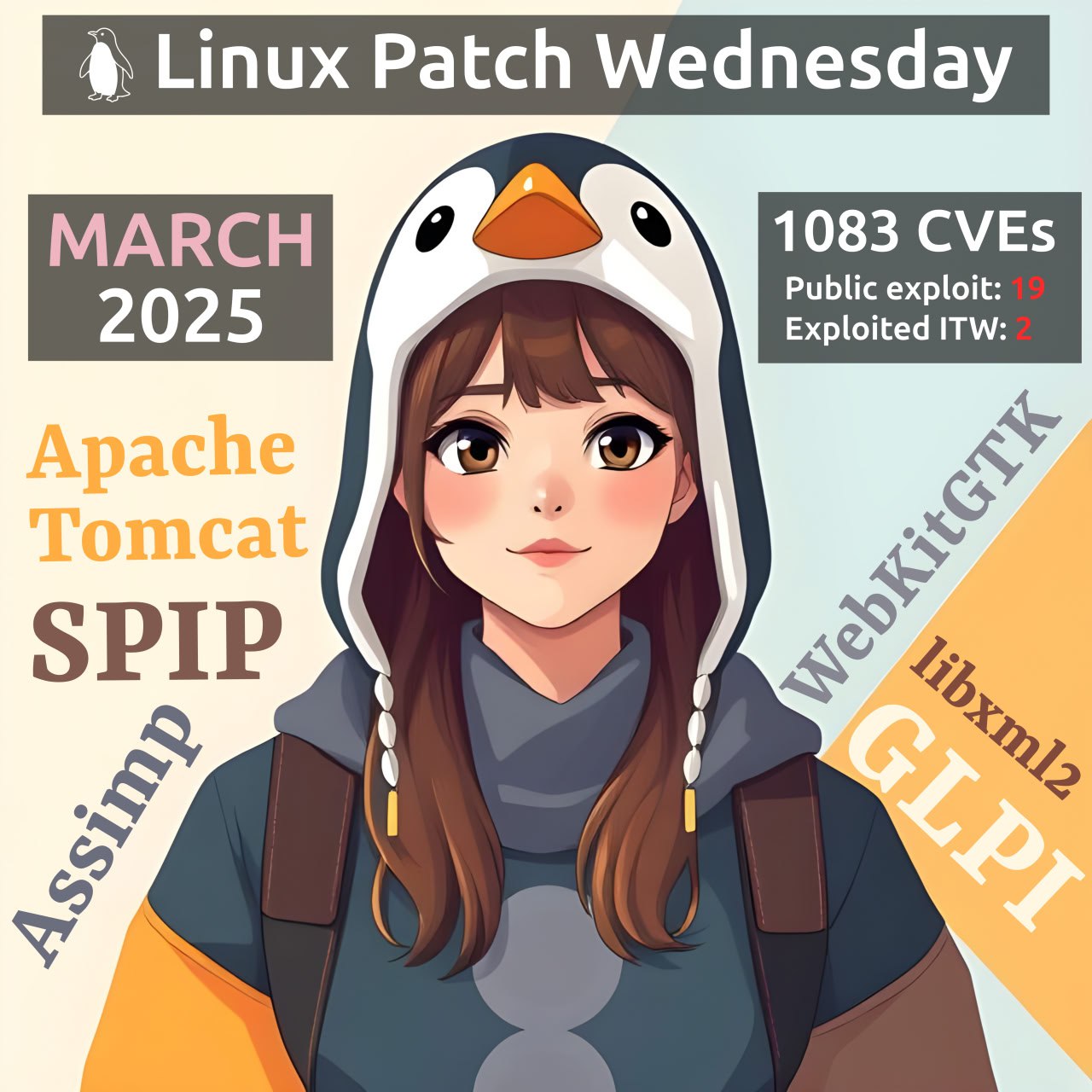
August Linux Patch Wednesday. I’m late with this LPW since I was improving the generation of LPW bulletin lists and the operation of Vulristics. 🙂 In August, Linux vendors addressed 867 vulnerabilities, nearly twice July’s total, including 455 in the Linux Kernel. One vulnerability is confirmed exploited in the wild (CISA KEV):
🔻 SFB – Chromium (CVE-2025-6558) – an exploited SFB in Chromium for the fourth month in a row. 🙄
Public exploits are available or suspected for 72 (❗️) vulnerabilities. The most important are:
🔸 RCE – WordPress (CVE-2024-31211) – from last year, but recently fixed in Debian; Kubernetes (CVE-2025-53547), NVIDIA Container Toolkit (CVE-2025-23266), Kafka (CVE-2025-27819)
🔸 Command Injection – Kubernetes (CVE-2024-7646)
🔸 Code Injection – PostgreSQL (CVE-2025-8714/8715), Kafka (CVE-2025-27817)
🔸 Arbitrary File Writing – 7-Zip (CVE-2025-55188)











